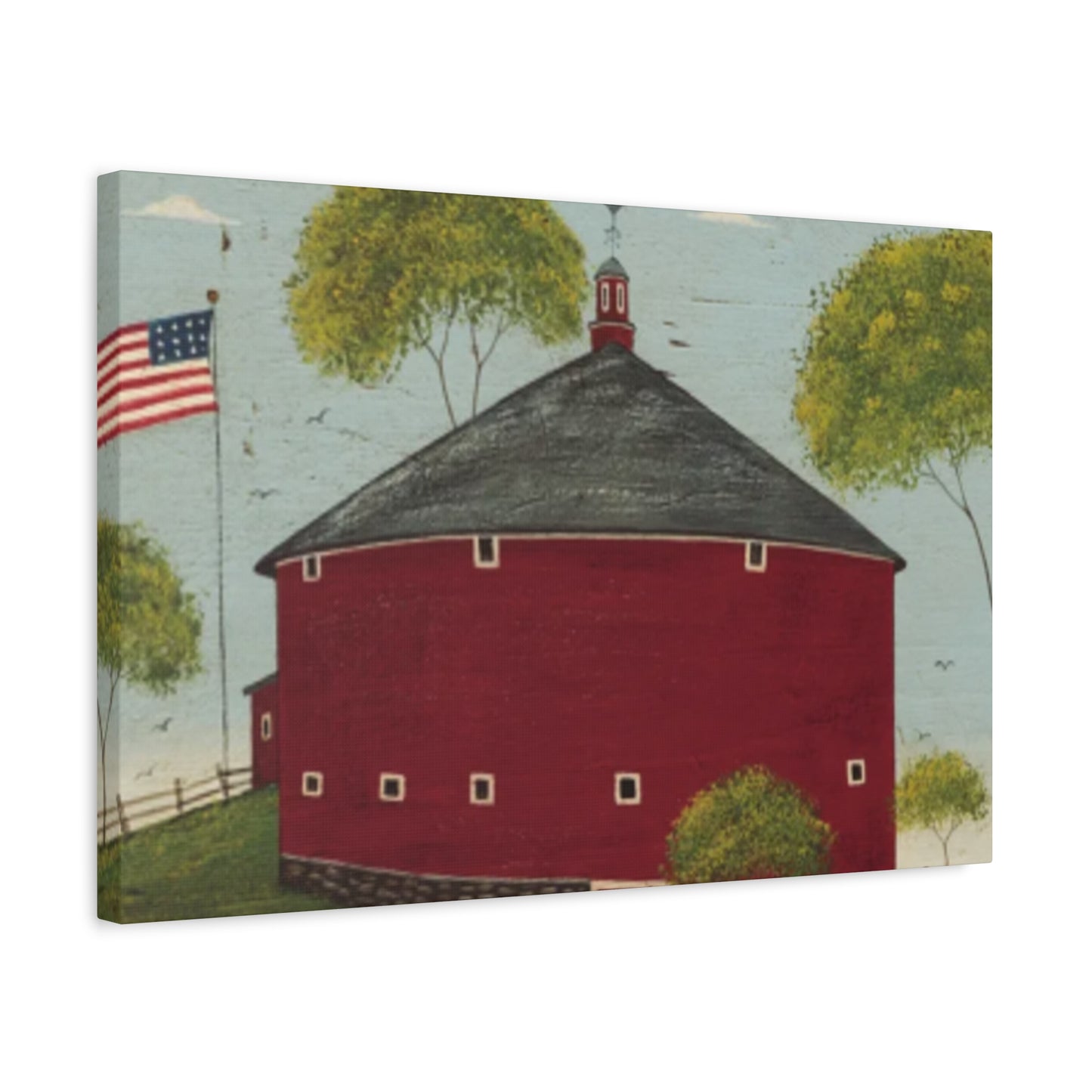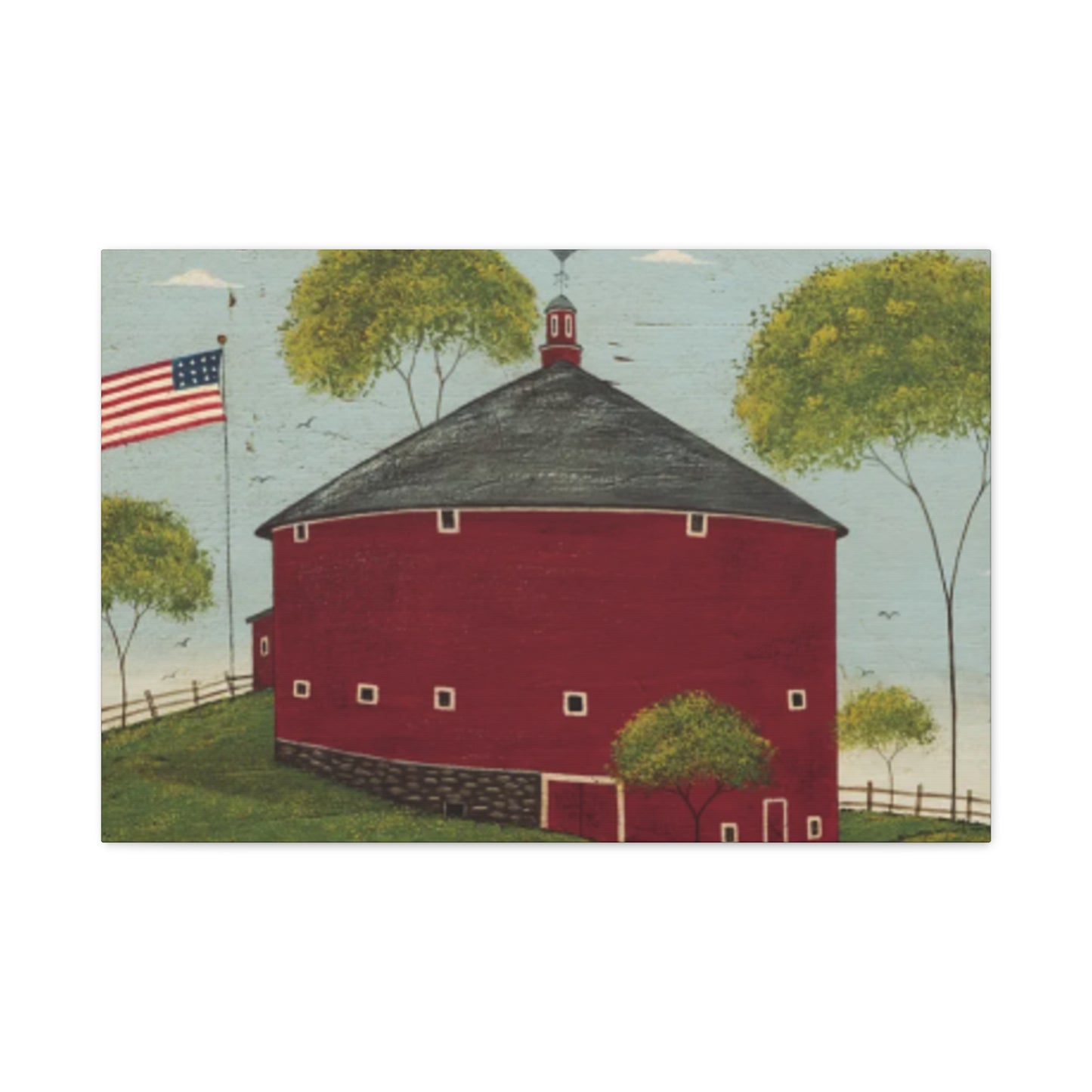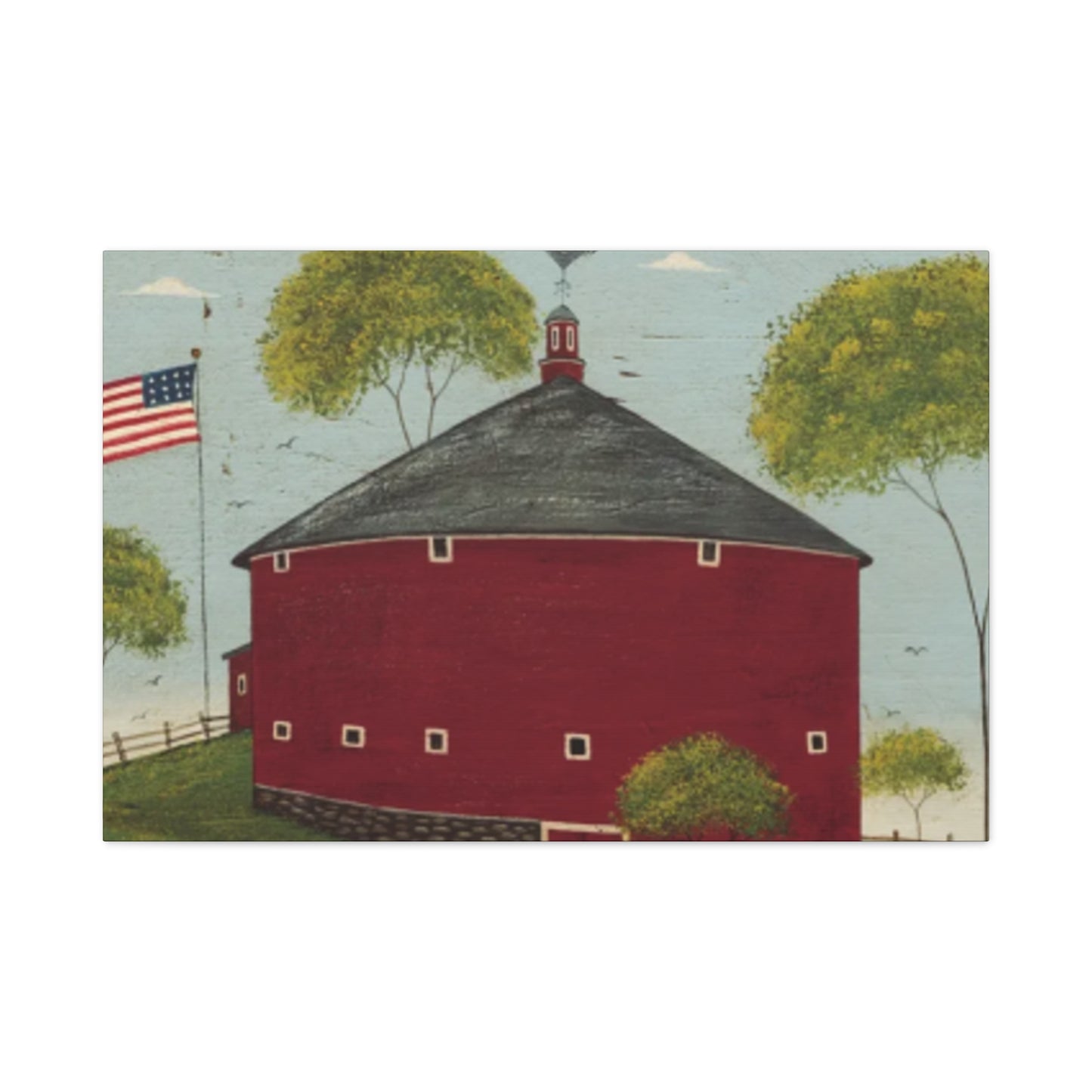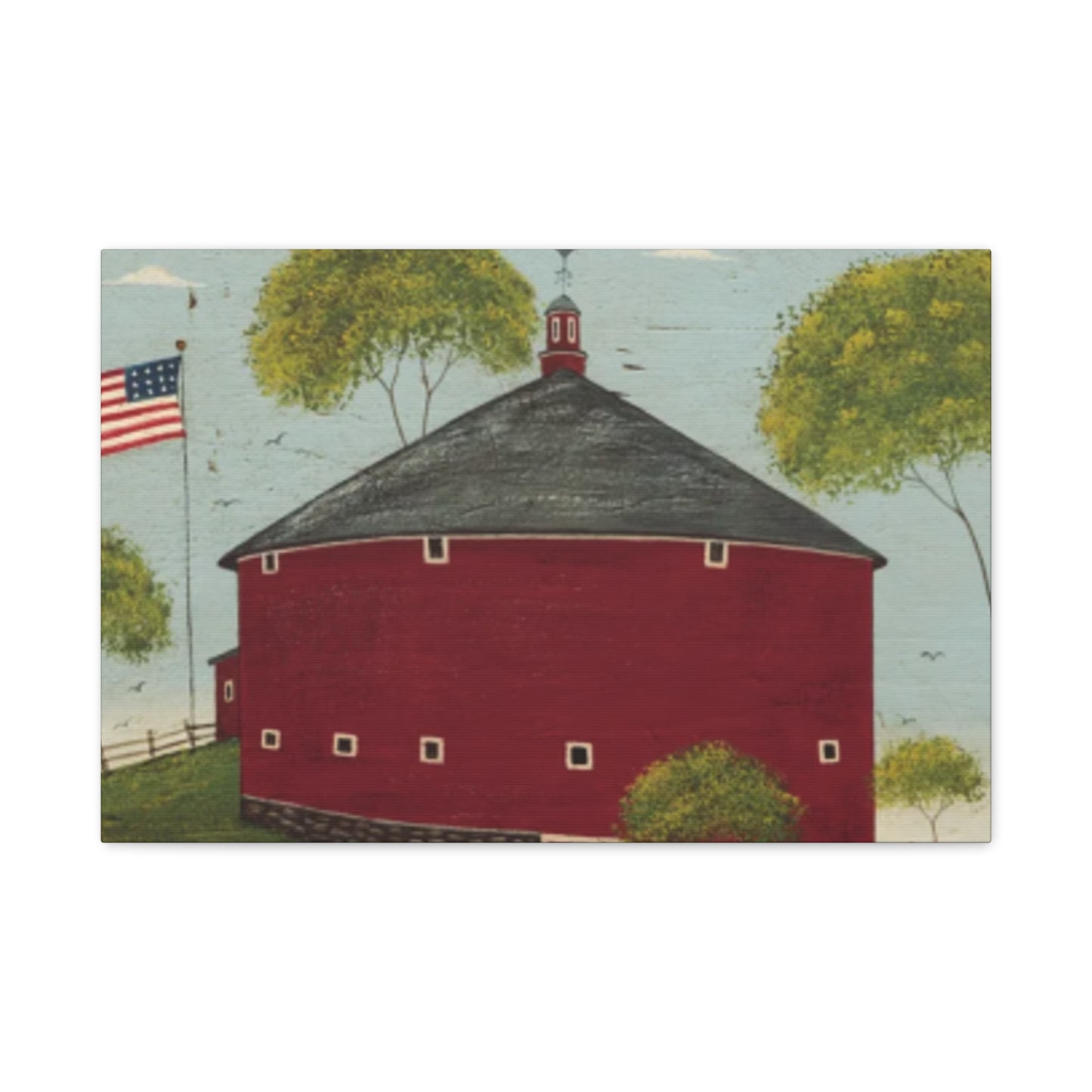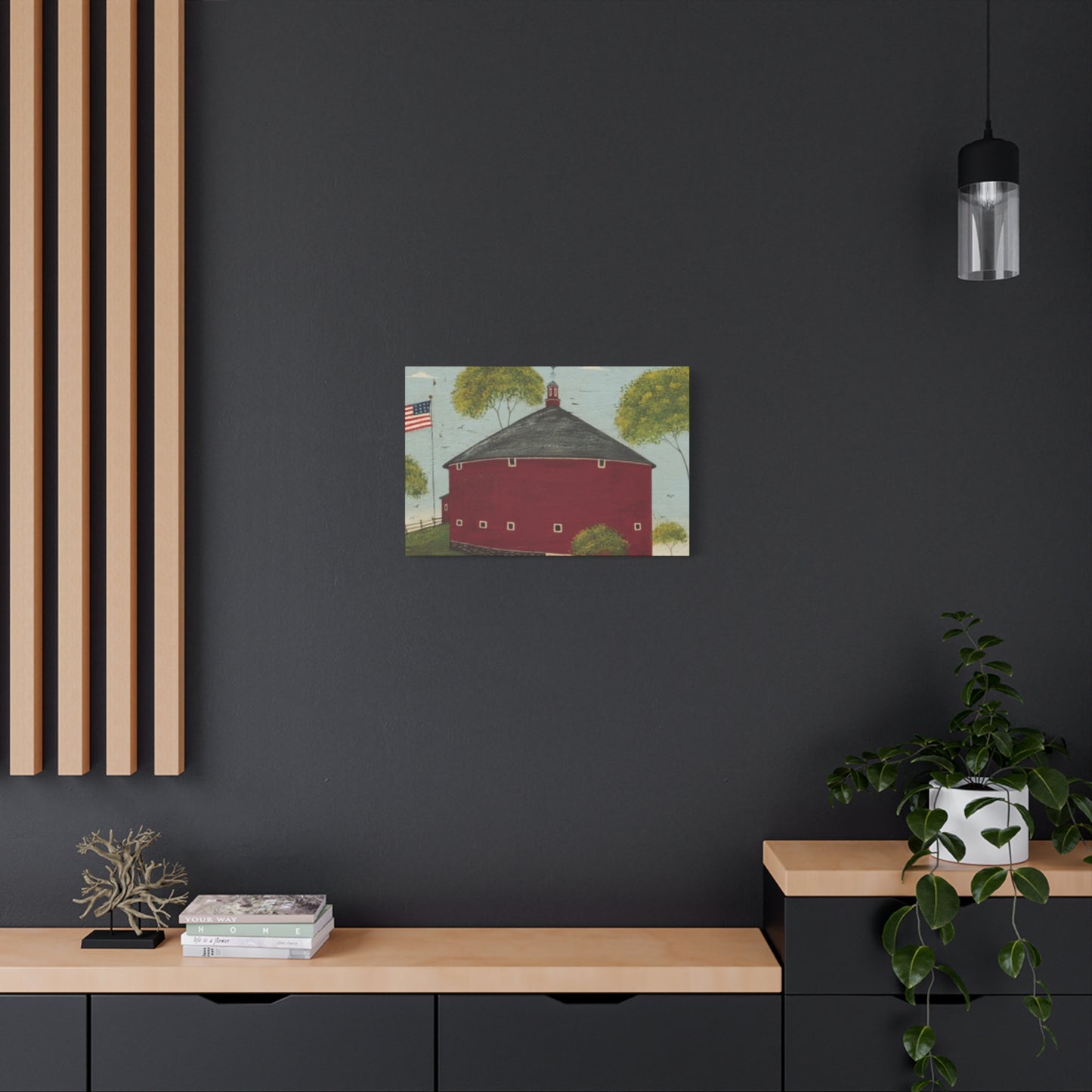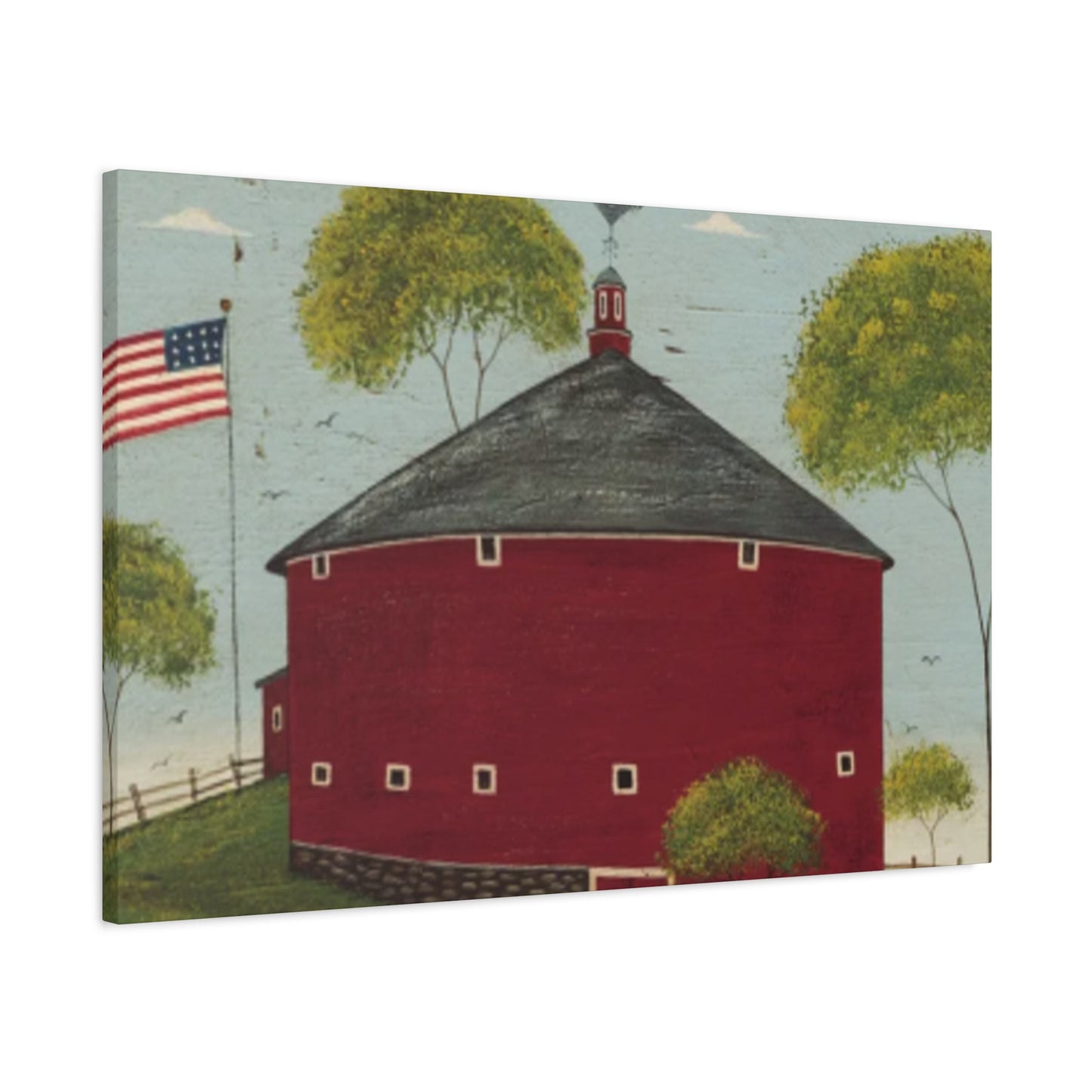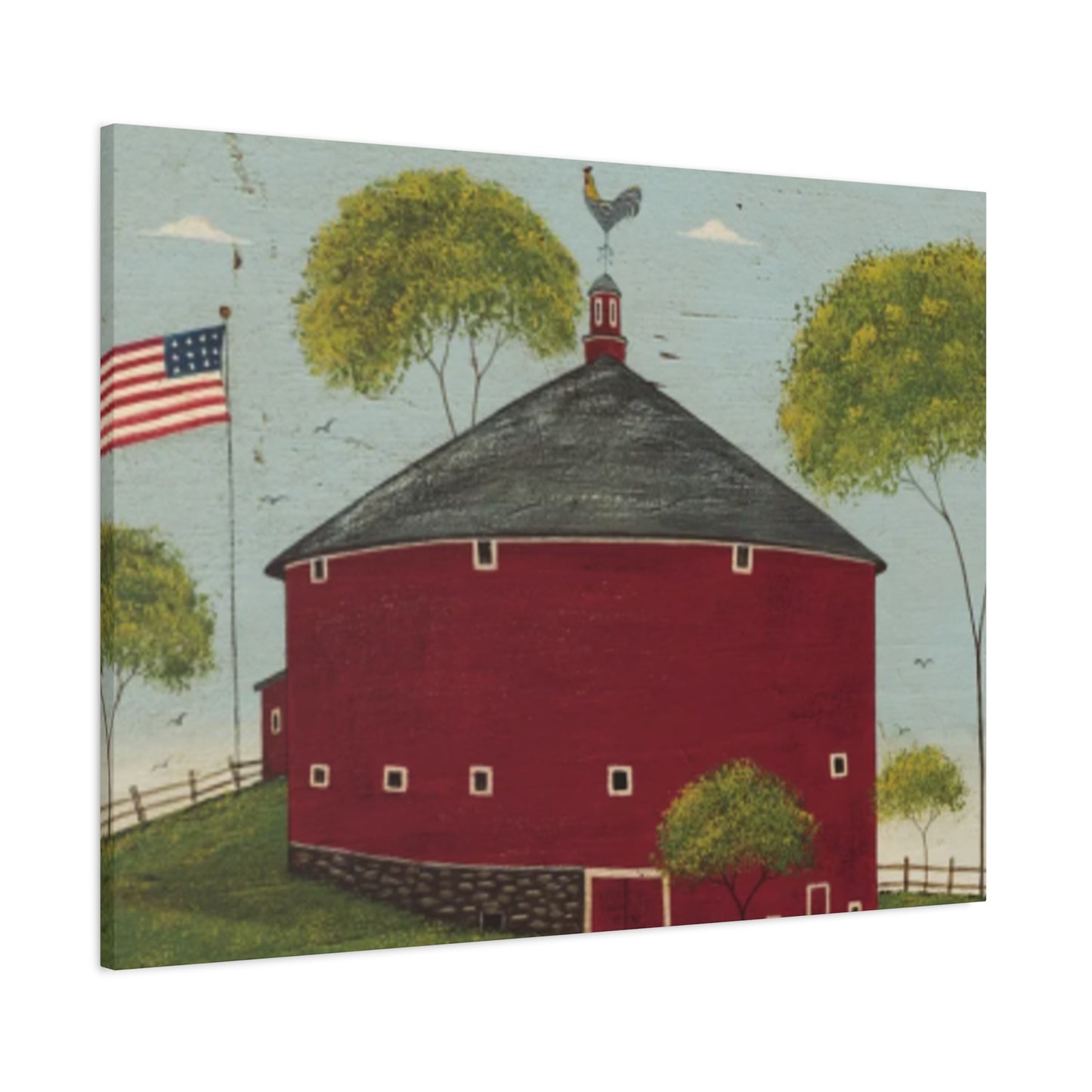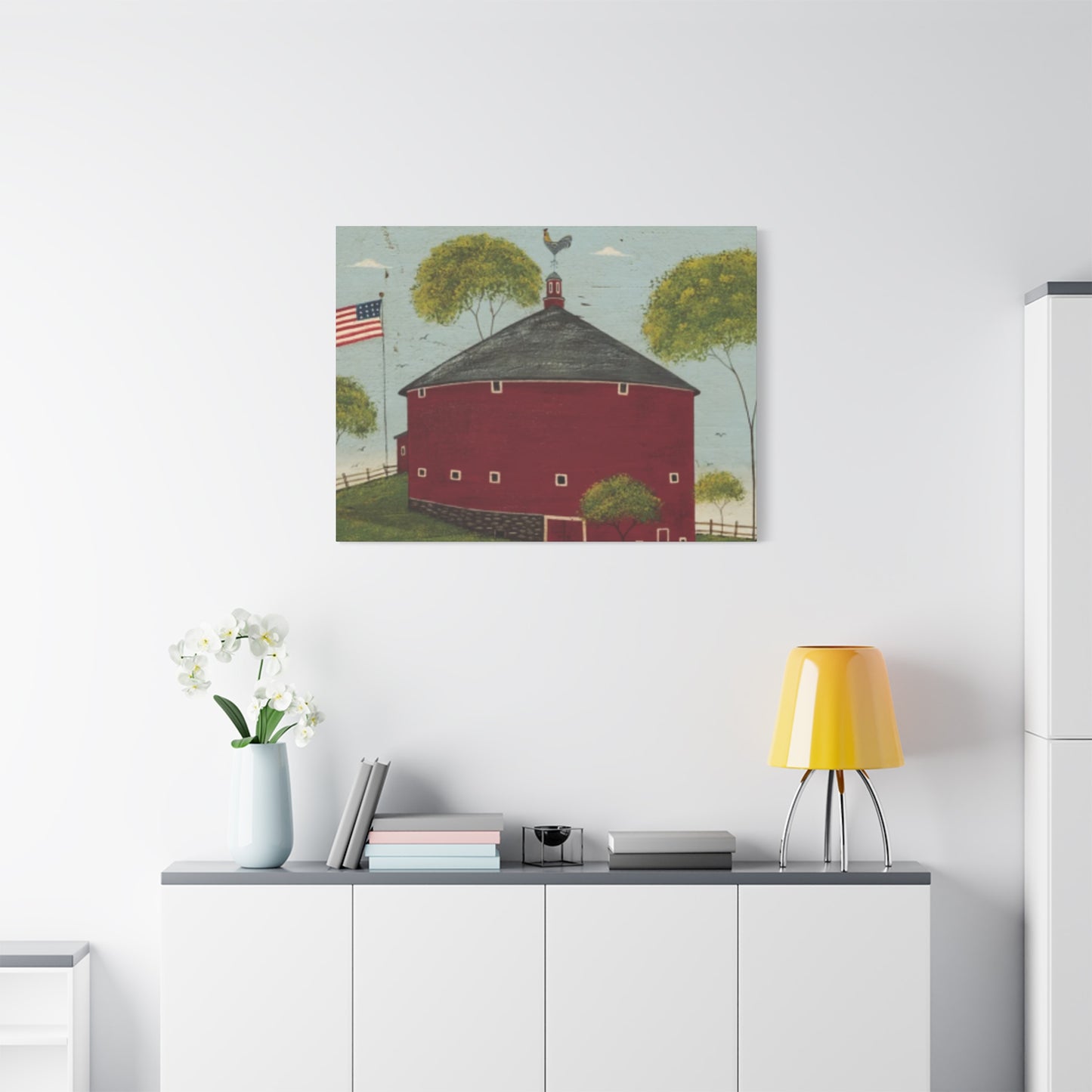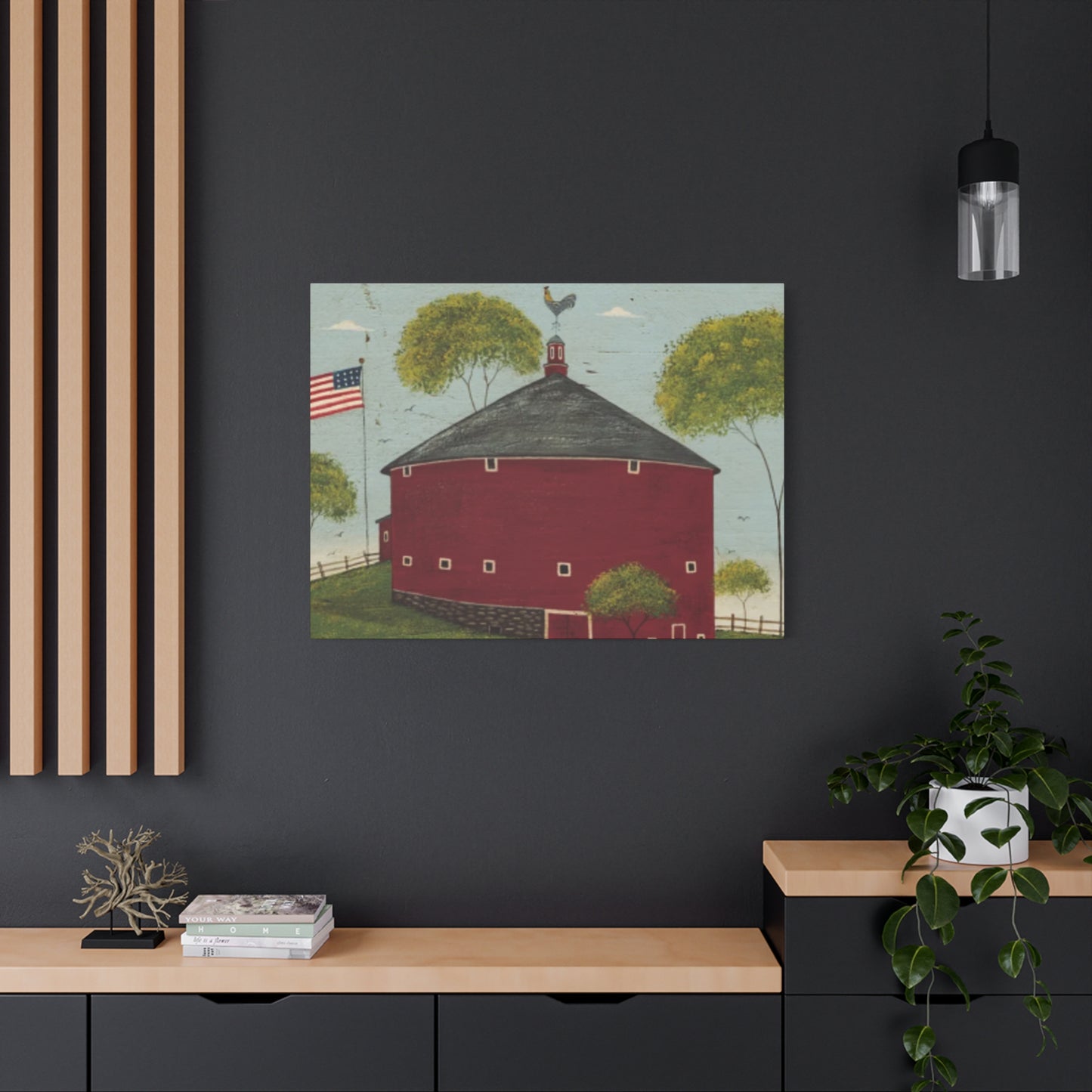Capturing Americana: The Enduring Appeal of Red House and Flag Kimble Warren Wall Art
In the vast and varied world of interior design and visual art, certain themes possess a timeless quality, an ability to resonate across generations and cultures with a message that is both deeply personal and universally understood. Among these enduring motifs, the imagery of a red house accompanied by a national flag stands as a profound symbol of home, heritage, and heartland values. This artistic expression finds a particularly poignant voice in what is often referred to as the Kimble Warren style of wall art. The red house and flag kimble warren wall art aesthetic is not merely a decorative choice; it is an immersion into a narrative of simplicity, resilience, and quiet patriotism. This art form captures the essence of a nation's soul through the humble yet powerful depiction of domestic life intertwined with national identity.
It speaks a language of nostalgia, of homecoming, and of the unwavering spirit that defines a community. This extensive exploration will delve into every facet of this captivating art style, from its core symbolic meanings and artistic techniques to its powerful emotional resonance and practical application in creating spaces that are not only beautiful but also rich with meaning. We will journey through the color palettes that bring these scenes to life, the compositional choices that guide the viewer's eye, and the subtle stories embedded within each brushstroke. It is a celebration of an aesthetic that transforms a simple wall into a window, offering a view into a world that feels both aspirational and deeply familiar, a testament to the enduring power of art to capture the ideals we hold most dear.
The Essence of the Kimble Warren Style: A Visual Philosophy
The Kimble Warren style, as it pertains to the depiction of the red house and flag, is less about a single artist's biography and more about a collective artistic philosophy. It represents a movement towards sincerity and legibility in art, a departure from abstract complexities in favor of heartfelt, accessible imagery. This aesthetic is rooted in the traditions of American folk art and rustic realism, prioritizing emotional connection over precise, photorealistic detail. The core tenet of this visual philosophy is to capture a feeling—the warmth of returning home, the quiet pride in one's country, the peacefulness of a rural landscape. Artists working within this stylistic framework often employ techniques that emphasize texture, warmth, and a sense of history. Brushstrokes may be visible and expressive, adding a tactile quality to the canvas that makes the scene feel handcrafted and authentic.
The perspective is often slightly flattened or idealized, reminiscent of primitive art, which serves to enhance the storybook quality of the image. It is not an attempt to replicate a specific place but rather to construct an archetypal one—a universal idea of "home." The Kimble Warren approach is characterized by a deliberate and thoughtful use of color, light, and composition to evoke a strong sense of nostalgia. It is an art form that invites contemplation, encouraging the viewer to project their own memories and aspirations onto the scene. This philosophy holds that the most powerful art is that which connects to shared human experiences, and few experiences are more fundamental than the concepts of shelter, community, and belonging, all of which are masterfully encapsulated in the red house and flag kimble warren wall art.
Deconstructing the Iconography: The Red House in Art
The red house, particularly within the context of American art, is a symbol laden with layers of meaning. It is far more than a simple architectural depiction; it is a cultural icon that represents warmth, safety, and the heart of family life. The choice of red is significant. Historically, red paint, often derived from ferric oxide or rust, was an inexpensive and durable option for barns and farmhouses, making it a common sight across the rural landscape. This practical origin story has evolved into a powerful symbolic association. The color red itself is emotionally charged, signifying passion, vitality, and strength. When applied to a house, it transforms the structure into a beacon of life and energy amidst the greens and browns of the natural world. In a snowy winter landscape, a red house offers a vibrant promise of warmth and shelter. In the lushness of summer, it stands as a bold centerpiece of domesticity.
Within the Kimble Warren aesthetic, the red house is rarely portrayed as a new, sterile building. Instead, it often shows signs of age and endurance—a testament to the generations it has sheltered and the stories it holds within its walls. It represents the concept of a homestead, a place of stability and deep roots in a world that is constantly changing. This iconography taps into a collective longing for authenticity and connection to the land. It is the physical embodiment of the American dream, not in terms of material wealth, but in the richness of a life lived with purpose and connection to one's heritage. The red house in this style of wall art is an invitation to come inside, to feel secure, and to remember the fundamental importance of having a place to call home.
The Symbolism of the Flag in Kimble Warren's Vision
When the image of a flag is introduced alongside the red house in the Kimble Warren style, the artwork's narrative deepens, expanding from the personal realm of the family to the broader context of national identity and community. The flag is not merely a decorative element; it is a potent symbol that anchors the domestic scene within a larger story of shared values, history, and collective aspiration. The way the flag is depicted is crucial to its meaning. In this aesthetic, it is rarely shown in a manner that feels jingoistic or overly aggressive. Instead, it is often portrayed with a quiet, respectful dignity. It might be hanging from a porch, gently stirring in a breeze, or standing steadfast on a flagpole in the yard. This subtlety is key to the artwork's emotional impact. It suggests a form of patriotism that is personal and deeply felt, rooted in the love of one's home and the simple freedoms that home represents.
The presence of the flag connects the intimate space of the homestead to the wider national fabric, implying that the strength and character of the nation are built upon the foundation of such steadfast, hardworking families. It serves as a reminder of the principles for which it stands—liberty, unity, and resilience. The flag in Kimble Warren inspired art often has a slightly weathered or timeless quality, suggesting that this sense of national pride is not a fleeting sentiment but a long-held tradition passed down through generations. It transforms the painting from a simple landscape into a statement of identity, a visual affirmation of belonging to a community and a country, making the red house and flag kimble warren wall art a powerful expression of cultural heritage.
The Marriage of Elements: Why the Red House and Flag Resonate Together
The combination of the red house and the flag within a single composition creates a powerful visual and emotional synergy. These two symbols, potent on their own, are magnified in their impact when presented together. This marriage of elements tells a complete story, bridging the gap between the microcosm of the family and the macrocosm of the nation. The red house represents the heart—the private, intimate world of family, love, and daily life. It is the anchor of personal identity. The flag, in contrast, represents the soul of the collective—the public sphere of community, shared history, and civic ideals. By placing them side-by-side, the artwork makes a profound statement: the personal and the public are inextricably linked. The strength of the nation (the flag) is derived from the strength of its individual homes (the red house), and the security of those homes is protected by the unity and principles the flag represents.
This combination resonates so deeply because it touches upon the dual desires for personal sanctuary and communal belonging that exist in all of us. The Kimble Warren style masterfully balances these two elements. The house is often the focal point, emphasizing the primacy of home, while the flag acts as a contextualizing element, giving the scene a deeper layer of significance. This visual harmony creates a sense of profound stability and rightness. It presents an idealized vision of a world where love for one's family and love for one's country are two sides of the same coin, living in perfect accord. It is this beautiful and reassuring narrative that gives the red house and flag kimble warren wall art its enduring and widespread appeal, making it a cherished addition to spaces where these values are celebrated.
Color Theory in Kimble Warren Inspired Art: Beyond Just Red
While the titular red of the house is the most prominent color, the overall palette of a Kimble Warren inspired artwork is a masterclass in emotional subtlety and visual harmony. The effectiveness of the art style relies heavily on a sophisticated understanding of color theory that goes far beyond a simple primary color scheme. The vibrant, warm red of the house is almost always balanced by a selection of cooler, more muted tones in the surrounding environment. The sky, for instance, is rarely a simple, flat blue. Instead, it might be a soft cerulean, a moody grey-blue, or a warm, glowing amber at sunset. These choices set the emotional tone for the entire piece. A clear blue sky suggests optimism and peace, while a stormy, dramatic sky might speak of resilience and fortitude. The greens of the landscape are equally important.
They are often earthy and natural, ranging from the fresh, lively green of spring grass to the deep, olive tones of mature trees, grounding the vibrant red house and preventing it from overwhelming the composition. The use of white is also critical, often appearing on the trim of the house, a picket fence, or as snow on the ground. This white provides visual relief, creating crisp lines and a sense of cleanliness and order. It acts as a highlight, making the other colors appear richer and more saturated. Furthermore, the palette is often unified by the use of subtle earth tones—browns, beiges, and ochres—in elements like tree trunks, dirt roads, and distant hills. These colors provide a sense of stability and connection to the land, reinforcing the themes of heritage and rootedness. The masterful interplay of these colors ensures that the artwork is not just a picture of a house, but a fully realized atmosphere that the viewer can almost step into.
The Role of Light and Shadow in Creating Nostalgia
Light and shadow are the tools with which artists in the Kimble Warren tradition sculpt emotion and evoke a powerful sense of nostalgia. The quality of light in these paintings is rarely harsh or direct; instead, it is often soft, diffuse, and imbued with a warm, golden quality. This is the light of the "golden hour"—the period shortly after sunrise or before sunset—when shadows are long and the world is bathed in a gentle, evocative glow. This specific lighting choice is a deliberate technique to trigger feelings of memory and sentimentality. It is the light associated with the end of a long summer day, the quiet of early morning, or the peacefulness of an autumn afternoon. It softens edges, mutes colors slightly, and creates a dreamlike atmosphere that transports the viewer to a time or place that feels cherished and safe.
The shadows play an equally crucial role. They are not simply dark patches but are filled with color and detail, suggesting depth and history. A long shadow cast by the red house itself can create a sense of grounding and permanence, anchoring the structure firmly to the earth. The shadows of trees stretching across a lawn or a field can create leading lines that guide the viewer's eye through the composition, telling a story of the passing day. This interplay of light and dark, known as chiaroscuro, is used not for dramatic tension, but for gentle, emotional resonance. It creates a mood of peaceful contemplation, suggesting the quiet rhythms of rural life. By manipulating light and shadow, the artist transforms a static scene into a dynamic moment, capturing a fleeting feeling of peace and timelessness that is central to the nostalgic appeal of this particular style of wall art.
Brushwork and Texture: The Tactile Dimension of the Artwork
A defining characteristic of the Kimble Warren artistic style is its emphasis on expressive brushwork and a tangible surface texture. Unlike hyper-realistic art that seeks to erase any trace of the artist's hand, this aesthetic celebrates the physical act of painting. The brushstrokes are often visible, confident, and imbued with energy. This technique, sometimes referred to as impasto when the paint is applied thickly, adds a three-dimensional, sculptural quality to the artwork. You can almost feel the rough-hewn wood of the house's siding, the gentle rustle of leaves on a tree, or the soft folds of the flag as it waves in the breeze. This tactile dimension serves several important purposes. Firstly, it enhances the artwork's sense of authenticity and craftsmanship. It reminds the viewer that this is an object made by a human being, not a machine-generated image.
This connection to the artist's hand deepens the emotional resonance of the piece, making it feel more personal and sincere. Secondly, the texture adds visual interest and complexity. It catches the light in unique ways, causing the surface to shimmer and change as the viewing angle or lighting conditions in the room shift. This makes the artwork a dynamic element in a home's decor, revealing new details over time. Finally, the expressive brushwork contributes to the overall rustic and folk-art charm of the style. It eschews slick perfectionism in favor of character and warmth. The slightly imperfect, textured surface feels more honest and approachable, perfectly aligning with the themes of simplicity, endurance, and the beauty of a life well-lived that are central to the red-house-and-flag narrative. This focus on texture is a key reason why the art feels so grounded and real, inviting not just a visual but an almost sensory experience.
Exploring Perspective: From Naive Charm to Rustic Realism
Perspective in the Kimble Warren style of art is often manipulated for emotional effect rather than for strict adherence to the rules of anatomical or architectural accuracy. The approach can range from a charming, almost childlike naivete to a more grounded rustic realism, but it consistently prioritizes feeling over clinical precision. In many pieces, you will notice a perspective that is slightly flattened, reminiscent of American folk artists like Grandma Moses. This "naive" perspective has a powerful effect. It simplifies the scene, removing distracting complexities and focusing the viewer's attention on the core symbolic elements—the house, the flag, the landscape. This simplification creates a storybook quality, enhancing the sense of nostalgia and idealism. It suggests a world that is orderly, understandable, and good.
The lines of the house might not converge perfectly, or a distant hill might seem closer than it should, but these "imperfections" are what give the art its warmth and accessibility. In other interpretations within this style, the perspective might lean more towards rustic realism. Here, the artist demonstrates a more formal understanding of depth, scale, and foreshortening, but still maintains a soft, painterly approach. The goal is not photorealism but a believable sense of place. Even in these more realistic renderings, the perspective is often chosen to enhance the feeling of welcome. The viewpoint might be from slightly below, making the house seem sturdy and comforting, or from a distance, emphasizing its peaceful integration into the wider landscape. Regardless of the specific approach, the use of perspective in the red house and flag kimble warren wall art is always in service of the narrative. It is a tool used to build a world that feels safe, timeless, and deeply resonant with the viewer's own longing for home.
The Influence of Folk Art on the Kimble Warren Aesthetic
The Kimble Warren aesthetic owes a significant debt to the rich traditions of American folk art. Folk art, by its very nature, is the art of the people—often created by self-taught artists, it prioritizes community values, storytelling, and direct emotional expression over the academic conventions of fine art. This heritage is clearly visible in the red house and flag motif. One of the key influences is the emphasis on clarity and symbolic representation. Folk artists traditionally painted not just what they saw, but what they knew and felt to be important. Similarly, the Kimble Warren style doesn't just depict a house; it depicts the idea of home. The red color, the flag, the picket fence—these are all chosen for their symbolic weight and immediate legibility. Another significant influence is the embrace of a non-literal, stylized approach.
Folk art often features flattened perspectives, bold outlines, and a vibrant, non-naturalistic use of color. These techniques are echoed in the Kimble Warren style's charming and approachable visual language. This stylistic choice makes the art feel honest and unpretentious, stripping away artistic ego to focus on the heart of the subject matter. Furthermore, the themes themselves—rural life, patriotism, community, and family—are the very bedrock of traditional American folk art. The red house and flag scenes are a modern continuation of a long artistic conversation about American identity and values. By drawing from this deep well of folk tradition, the Kimble Warren aesthetic gains a sense of historical depth and cultural authenticity. It feels rooted and timeless, connecting a contemporary home's decor to a lineage of art that has always celebrated the beauty of everyday life and the enduring spirit of the heartland.
Seasonal Depictions: The Red House Through the Year
A fascinating aspect of the red house and flag kimble warren wall art is its versatility in depicting the changing seasons, with each season offering a unique emotional lens through which to view the core subjects. The portrayal of the red house throughout the year allows for a richer, more dynamic exploration of the theme of home as a constant sanctuary in an ever-changing world. A springtime depiction is filled with a sense of renewal and optimism. The landscape is lush with fresh greens, flowering trees may dot the yard, and the light is often clear and bright. The red house in this context feels like a place of new beginnings, a stable anchor amidst the flurry of life's reawakening. In summer, the scene is often one of warmth, leisure, and abundance. The foliage is deep and full, the sky a vibrant blue, and the flag might be shown catching a gentle summer breeze.
This version evokes feelings of peak contentment, lazy afternoons, and the joy of community gatherings. It represents the homestead in its most idyllic and productive state. Autumn brings a palette of warm oranges, yellows, and deep reds, creating a scene of cozy nostalgia. The red of the house harmonizes beautifully with the fall colors, suggesting a place of harvest, warmth, and preparation for the coming winter. It speaks of gratitude and the beauty of transition. Finally, the winter scene is perhaps one of the most powerful. The red house stands as a vibrant beacon of warmth and life against a blanket of pristine white snow. Smoke curling from the chimney becomes a powerful symbol of shelter and family gathered within. The flag, still flying, represents endurance and unwavering principle even in the harshest of times. By capturing the red house across these different seasons, the art style tells a more complete story of what it means to be home—a place of steadfast comfort and security, no matter the season.
Evoking Nostalgia: Art as a Portal to the Past
At its very core, the red house and flag kimble warren wall art is a powerful engine of nostalgia. Nostalgia is more than just a simple recollection of the past; it is a sentimental longing, a bittersweet emotion that combines the pleasure of memory with the sadness of its passing. This art style masterfully taps into this complex feeling, acting as a visual portal to a time and place that feels simpler, safer, and more authentic. The choice of subject matter is the first key. The rural homestead, the classic architecture, and the patriotic flag are all symbols that evoke an idealized version of the American past. It is a past, whether real or imagined, that is associated with strong community bonds, connection to the land, and clear, unwavering values. The artistic techniques employed further amplify this nostalgic effect.
The warm, golden light suggests the hazy quality of a fond memory. The expressive, slightly imperfect brushwork feels more like a recollection than a photograph, capturing the emotion of a scene rather than its precise details. The flattened perspective and charming simplicity create a storybook atmosphere, transporting the viewer back to the uncomplicated narratives of childhood. For many, this art doesn't just represent a generic past; it triggers specific, personal memories. It might recall a grandparent's farmhouse, a family vacation to the countryside, or a feeling of community from a small-town celebration. By decorating a home with this art, people are not just choosing an aesthetic; they are curating an emotional environment. They are creating a space that offers comfort, a refuge from the complexities and anxieties of the modern world. The artwork becomes a daily reminder of where they come from, of the values they hold dear, and of the enduring ideal of a peaceful, meaningful life.
The Concept of "Home" in Red House and Flag Art
The concept of "home" is one of the most fundamental and emotionally charged themes in human experience, and it is the central subject of the red house and flag art style. This art delves deep into what "home" truly means, exploring it not just as a physical structure but as a complex tapestry of feelings, memories, and ideals. On the most basic level, the house represents shelter and security. The sturdy walls and solid roof are a visual promise of safety from the elements and the uncertainties of the outside world. The warm red color enhances this feeling, suggesting a place of comfort, love, and vitality. But the art goes further, depicting home as an anchor of identity. The style, often showing a house that has stood for generations, suggests that home is a place of deep roots, a connection to one's heritage and lineage.
It is the repository of family history, the backdrop against which our lives unfold and our stories are written. The presence of the flag expands the definition of home from the individual family unit to the larger community and nation. It suggests that home is also a sense of belonging, of being part of something larger than oneself. It is the shared values and culture that create a collective home for all citizens. The Kimble Warren aesthetic beautifully captures the emotional landscape of home. The peaceful, often rural settings evoke a sense of tranquility and escape. The implied human presence speaks of love, companionship, and the daily rhythms of family life. Ultimately, this art form presents home as a sanctuary—not just a physical one, but a psychological and emotional one as well. It is a place where we can be our most authentic selves, a place of unconditional acceptance and enduring love. This profound and multi-layered exploration of "home" is what gives the art its lasting power and deep resonance.
Patriotism and Pride: A Subtle or Overt Statement
The inclusion of the national flag in the red house and flag kimble warren wall art makes it an undeniable statement of patriotism. However, the nature of this statement is nuanced and can be interpreted in various ways, ranging from subtle and personal to more overt and celebratory. The power of the Kimble Warren aesthetic lies in its ability to accommodate this spectrum of expression. In its more subtle form, the patriotism is quiet, dignified, and deeply integrated into the fabric of everyday life. The flag might be small, partially furled, or rendered in soft, slightly muted colors. Its presence feels natural and unassuming, like a long-standing family tradition. This approach suggests a form of patriotism that is not about loud declarations but about a steadfast, lived experience. It is a love of country rooted in the love of one's home, land, and community.
It speaks to the idea that true patriotism is found in the responsible stewardship of one's own small corner of the world. In a more overt interpretation, the flag may be larger, more centrally located, and depicted with bright, crisp colors, catching the full light of the sun. The scene might be set on a national holiday, with additional elements like bunting or festive decorations. This version is more celebratory and explicit in its display of national pride. It is a joyful affirmation of shared identity and collective celebration. Yet, even in these more overt displays, the Kimble Warren style maintains its characteristic warmth and sincerity. The patriotism never feels aggressive or exclusionary. Because it is always grounded by the presence of the home, it remains connected to the values of family, community, and peace. The artwork serves as a beautiful and respectful way for individuals to express their love for their country within their personal space, making a statement of pride that is both heartfelt and welcoming.
The Allure of Rural Simplicity in a Complex World
In an age characterized by digital saturation, urban density, and relentless pace, the allure of rural simplicity has never been stronger. the red house and flag kimble warren wall art directly taps into this deep-seated cultural yearning for a simpler, more grounded way of life. The artwork acts as a powerful antidote to the complexities and anxieties of modern existence. The scenes depicted are intentionally uncomplicated. They focus on fundamental, timeless elements: a sturdy house, the open sky, the natural landscape, and a symbol of heritage. There are no buzzing notifications, no traffic jams, no overwhelming digital interfaces. This visual quietness offers a form of mental and emotional respite. Looking at such a piece can be a meditative experience, a moment to disconnect from the chaos and reconnect with something more elemental and enduring.
The rural setting is key to this appeal. It represents a life lived in harmony with the natural rhythms of the day and the seasons. It suggests self-sufficiency, honest labor, and a direct connection to the land. This is a powerful fantasy for many who feel detached from the sources of their food and the natural world. The Kimble Warren style idealizes this simplicity without being naive. The often-weathered look of the house or the sturdy fence suggests a life of hard work and resilience, not one of effortless ease. This adds a layer of authenticity to the ideal, making it feel aspirable yet respectable. By bringing this imagery into an urban or suburban home, individuals can create a psychological anchor to a set of values they admire. The artwork becomes a daily reminder to seek out moments of peace, to value community, and to find beauty in the simple, fundamental aspects of life. It is a window into a world that offers a sense of calm and clarity in our often-overwhelming present.
Art as a Storyteller: Narratives Within the Frame
Every piece of red-house-and-flag-kimble-warren-wall-art is more than just a static image; it is a storyteller. Each composition is a narrative frozen in a single frame, inviting the viewer to imagine the stories that have unfolded and will continue to unfold within that setting. The artist provides the characters and the stage—the steadfast house, the proud flag, the evocative landscape—and the viewer's imagination does the rest. The narrative potential is rich and varied. A painting of the house at dawn, with a soft light touching the flag, might tell a story of a new day's potential, of quiet industry as a family begins its chores. A depiction in the golden light of late afternoon could narrate a tale of homecoming, of work completed, and of peaceful rest. A winter scene, with snow blanketing the ground and a warm light in the window, tells a powerful story of resilience, shelter, and the warmth of family bonds against the cold.
The details within the painting often act as story prompts. A tire swing hanging from a large oak tree speaks of childhood, laughter, and the passage of time. A well-worn path leading to the front door suggests countless journeys, a history of comings and goings, of welcomes and farewells. A blooming garden implies a story of nurturing, patience, and the rewards of hard work. Because the figures are often absent, the stories are not limited to one specific narrative. The artwork becomes a repository for a multitude of potential tales. It can be a story of generations, of a family building a life on that land. It can be a story of an individual finding solitude and peace. It can even be a story of a community, with the house representing a central meeting point. This narrative quality is what makes the art so engaging and enduring. It is not something you simply look at once; it is a scene you return to, discovering new details and imagining new stories each time.
A Celebration of Heritage and Tradition
the red house and flag kimble warren wall art is, at its heart, a profound celebration of heritage and tradition. It is an art form that looks back, not with a sense of regret, but with reverence and appreciation for the values and aesthetics that have shaped a cultural identity. It serves as a visual link to the past, honoring the traditions that have been passed down through generations. The heritage being celebrated is multifaceted. It is the heritage of the land itself—the agrarian roots, the pioneer spirit, and the deep connection to the natural environment. The rustic farmhouse and the sprawling landscape pay homage to a time when life was more directly tied to the earth. It is also a celebration of architectural heritage. The simple, functional, yet beautiful design of the traditional American farmhouse is presented as a timeless ideal. The art preserves this architectural style, reminding us of its enduring appeal and the values of practicality and craftsmanship it represents.
Most significantly, it is a celebration of cultural and familial heritage. The artwork evokes a sense of lineage, of a home that has sheltered multiple generations. The presence of the flag reinforces this, connecting the family's personal heritage to the broader national story. It suggests that traditions—like celebrating national holidays, respecting one's elders, and valuing hard work—are the threads that weave the fabric of both family and society. By choosing to display this art, individuals are making a statement about the importance of their own heritage. It becomes a conversation starter, a way to share family stories and to instill a sense of history and belonging in younger generations. In a world that often prioritizes novelty and constant change, this art form stands as a beautiful and poignant reminder of the strength and comfort that can be found in embracing and celebrating our traditions.
Integrating Kimble Warren Wall Art into Modern Interiors
One of the most compelling attributes of the red house and flag kimble warren wall art is its surprising versatility and ability to complement a wide range of interior design styles, including sleek, modern aesthetics. While it may seem counterintuitive to place rustic, traditional art in a contemporary setting, the contrast can create a dynamic and deeply personal space. In a modern interior characterized by clean lines, neutral colors, and minimalist furniture, this art style can act as a powerful focal point, injecting warmth, texture, and a sense of history into the room. The rich colors of the painting, particularly the vibrant red of the house, can provide a much-needed pop of color against a backdrop of whites, grays, and beiges. The expressive brushwork and tactile surface of the canvas introduce a layer of organic texture that can prevent a modern space from feeling cold or sterile.
The key to successful integration lies in creating a visual dialogue between the old and the new. This can be achieved through framing. A simple, slim black or white frame can bridge the gap between the traditional artwork and the modern decor, giving the piece a more updated and graphic feel. Alternatively, a rustic, reclaimed wood frame can be used to lean into the contrast, creating a bold statement. Placement is also crucial. Hanging the artwork above a minimalist console table, a sleek sofa, or in a minimalist entryway allows it to stand out and be appreciated as a deliberate, thoughtful design choice. It shows a respect for tradition while still fully embracing a modern lifestyle. This juxtaposition tells a sophisticated design story, suggesting a homeowner who values both the past and the present, creating a space that is not just stylish, but also soulful and rich with personal meaning.
Styling a Farmhouse or Country-Themed Room
the red house and flag kimble warren wall art is a natural and quintessential element for any room styled with a modern farmhouse or traditional country aesthetic. This art form embodies the very essence of these design styles, which emphasize warmth, comfort, rustic charm, and a connection to a simpler, more authentic way of life. When styling a room around this art, the goal is to create an environment that feels like a natural extension of the scene depicted in the painting. Start with a foundation of natural materials. Furniture made from reclaimed wood, with visible grain and imperfections, perfectly complements the rustic feel of the art. Incorporate textures like woven jute or sisal for rugs, soft linen or cotton for upholstery and curtains, and perhaps some galvanized metal or wrought iron accents for lighting and hardware. The color palette should be inspired by the artwork. A base of warm whites, creams, and light grays on the walls creates the classic farmhouse look.
Layer in accent colors drawn from the painting—the barn red can be echoed in a throw blanket, the deep green in some potted plants, and the sky blue in patterned pillows. Decorative accessories should reinforce the theme. Look for vintage-inspired items like ceramic pitchers, antique-style clocks, or wire baskets. A collection of quilts or woven textiles can add a layer of handcrafted charm that resonates with the folk-art influence of the painting. The key is to create a space that feels lived-in, welcoming, and unpretentious. The red house and flag artwork should serve as the heart of the room, the central narrative piece that all other design elements support. The result will be a cozy, cohesive, and deeply inviting space that perfectly captures the spirit of country living.
Choosing the Right Frame to Enhance the Artwork
The frame of an artwork is like the setting of a gemstone; it has the power to protect, enhance, and even redefine the piece it surrounds. Choosing the right frame for your red-house-and-flag-kimble-warren-wall-art is a critical step in integrating it into your home's decor and maximizing its aesthetic appeal. The choice of frame should be a deliberate one, guided by both the style of the artwork and the style of the room in which it will hang. For a look that complements the rustic, traditional nature of the art, a frame made from natural or reclaimed wood is an excellent choice. A warm oak, a dark walnut, or a weathered barnwood frame will echo the materials and textures depicted in the painting, creating a cohesive and harmonious presentation. This style of frame is perfect for farmhouse, country, or traditional interiors. If you wish to place the art in a more modern or transitional setting, a simpler frame might be more appropriate.
A clean, straight-lined frame in a solid black, white, or even a metallic finish like pewter or bronze can provide a contemporary edge. A black frame will create a strong, graphic border that makes the colors of the artwork pop, while a white frame can give it a lighter, more airy feel. Another popular and contemporary option is the gallery wrap, where the canvas is stretched around the wooden stretcher bars and secured on the back. This frameless presentation puts the entire focus on the artwork itself, allowing the painted scene to extend to the very edges of the piece. This is a versatile choice that works well in almost any decor style, from minimalist to eclectic. Ultimately, the best frame is one that doesn't compete with the artwork but instead serves to elevate it, drawing the viewer's eye inward and deepening their connection to the powerful story within the canvas.
Lighting Your Artwork for Maximum Impact
Proper lighting is one of the most crucial yet often overlooked aspects of displaying art in the home. The right lighting can bring a piece of red-house-and-flag-kimble-warren-wall-art to life, revealing its full range of color, texture, and emotional depth, while poor lighting can leave it looking dull, flat, and insignificant. The goal of lighting artwork is to provide even, consistent illumination without creating glare or causing damage to the piece over time. The best type of lighting for art is typically a dedicated picture light or track lighting with adjustable heads. A picture light mounted directly above the frame provides focused, intimate illumination that is perfect for making a piece a focal point in a dimly lit room. Track lighting offers more flexibility, allowing you to aim one or more lights precisely at the canvas from a distance. This can be ideal for larger pieces or for creating a "wall wash" effect that illuminates the entire artwork evenly. The type of bulb used is also critical.
LED bulbs are the modern standard for art lighting. They produce very little heat and emit no harmful UV rays, both of which can cause colors to fade and canvases to degrade over time. Look for LEDs with a high Color Rendering Index (CRI) of 90 or above. A high CRI ensures that the colors of the artwork will be rendered accurately and vibrantly, just as the artist intended. The color temperature of the light is another consideration. A warm white light (around 2700K to 3000K) will enhance the warm, nostalgic feel of the Kimble Warren style, enriching the reds and golden tones. Finally, consider the angle of the light. An angle of about 30 degrees from the ceiling is often recommended to illuminate the painting fully while minimizing any distracting glare or shadows cast by the frame or the texture of the canvas. By investing in proper lighting, you honor the artwork and ensure it has the dramatic and beautiful impact it deserves.
Creating a Gallery Wall with Americana Themes
For those who wish to make a more expansive statement, a single piece of red-house-and-flag-kimble-warren-wall-art can serve as the magnificent centerpiece of a larger gallery wall dedicated to Americana themes. A gallery wall is a curated collection of various pieces of art and objects, arranged together to tell a cohesive story. An Americana-themed gallery wall can be a deeply personal and visually stunning way to celebrate heritage and history. To build the collection around your central red house painting, look for other pieces that share a similar aesthetic or thematic content. This could include other landscape paintings of rural scenes, such as red barns, covered bridges, or rolling fields. Vintage-inspired art, such as botanical prints of native plants or ornithological illustrations of American birds, can add a layer of natural history. Maps can be another powerful element.
A vintage map of your home state or a historical map of the country can provide context and a sense of place. Incorporate different textures and mediums to add visual interest. A framed piece of a handmade quilt, a collection of antique postcards, or even a rustic architectural salvage item can be mixed in with the framed art. The key to a successful gallery wall is to create a sense of unity. This can be achieved by using a consistent color palette drawn from your central painting or by using a consistent style of frame for all the pieces. Before hanging anything, lay all the items out on the floor to experiment with different arrangements. Strive for a balance of sizes, shapes, and orientations. A well-curated Americana gallery wall, anchored by the powerful symbolism of the red house and flag, becomes more than just a collection of pictures; it becomes a rich, multi-layered tapestry of personal and national history.
Conclusion:
In the final analysis, the profound and lasting appeal of the red house and flag kimble warren wall art lies in its remarkable ability to distill a complex set of powerful human emotions and cultural ideals into a single, resonant image. It is more than mere decoration; it is a visual anthem, a painted poem that speaks to the core of what it means to have a place in the world. This art style serves as a powerful conduit to the concepts of home, heritage, patriotism, and the quiet dignity of a simple, well-lived life. It is a testament to the idea that a home is not merely a structure of wood and nails, but a sanctuary built from memories, love, and shared values. The red house stands as a vibrant beacon of warmth and stability, a universal symbol of shelter and family that transcends cultural and generational divides. Its presence on a canvas is a promise of comfort and a reminder of the enduring importance of our personal roots.
When paired with the national flag, the narrative expands, gracefully weaving the personal story of a family into the grander tapestry of a nation's history. The flag, depicted with a gentle and respectful dignity in the Kimble Warren aesthetic, transforms the scene from a simple domestic portrait into a celebration of shared identity and communal belonging. This marriage of symbols creates a harmonious and reassuring vision, suggesting that the strength of a country is forged in the heart of its homes. Through masterful use of warm light, evocative color palettes, and expressive, tactile brushwork, the artists working within this tradition create not just pictures, but atmospheres. They craft portals to a world that feels both idealized and deeply authentic, a world that offers a much-needed respite from the clamor and complexity of modern life. It is an art of nostalgia, but not one that is trapped in the past. Instead, it brings the cherished values of the past—resilience, community, integrity—into the present, offering them as a source of strength and inspiration for the future.

















